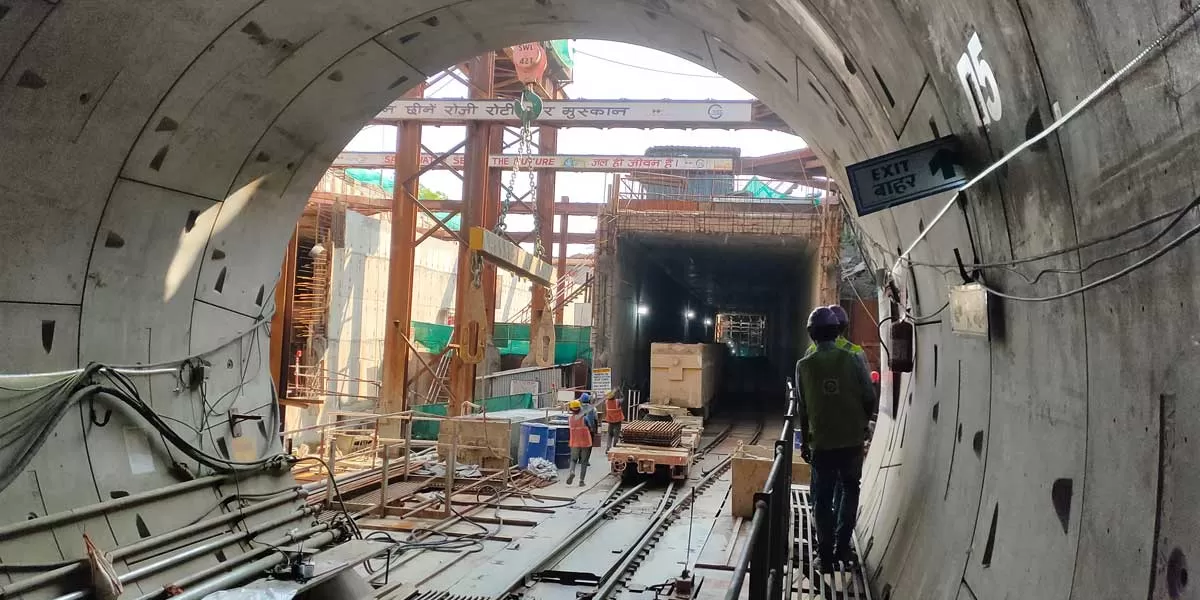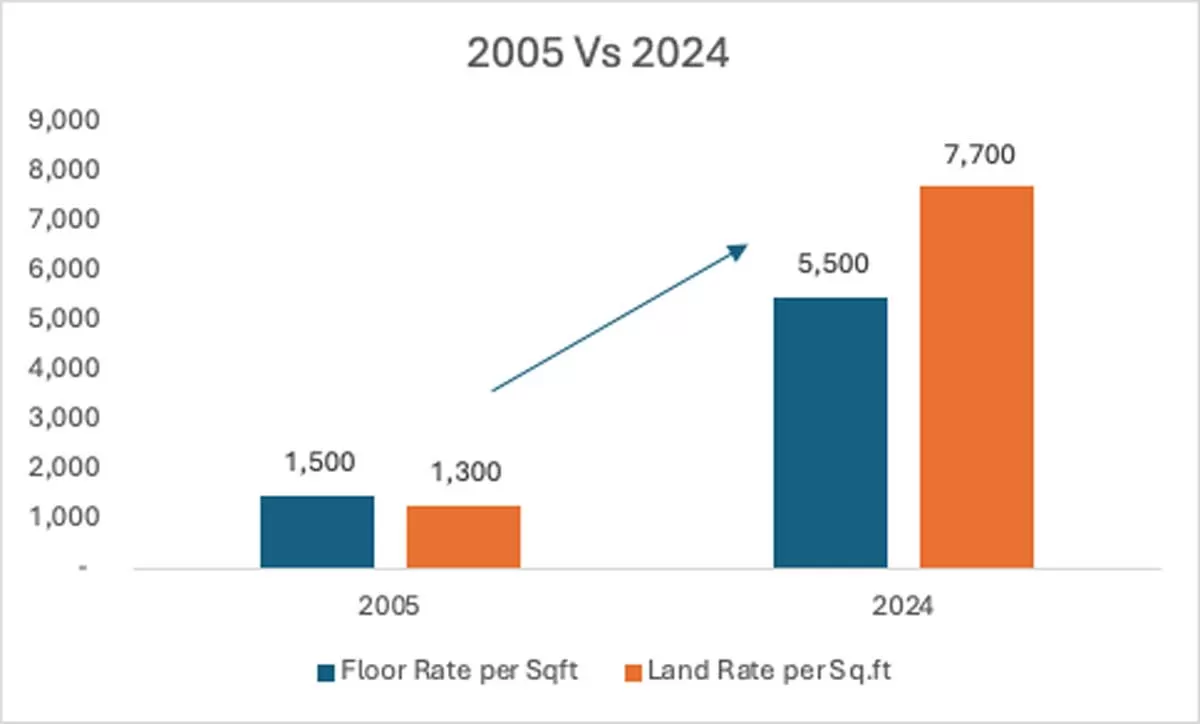Rail, road, metro, hydropower, irrigation, water and sewerage projects are boosting demand for tunnelling machines in India. With tunnelling projects in the roads sector alone valued at Rs 2 trillion, the opportunity is huge. CW asked a few experts what’s driving their choice of equipment, and how they put their machines to the best use.
Outcome-driven decision
Circular TBMs aren’t well suited to road tunnels because of the width limitation associated with this technology; also, TBMs are not found economical for short tunnels, explains Vinod Shukla, Managing Director, FGS Engineers & Innovators and Co-Chairman of the Tunnel Council, Associated Chambers of Commerce & Industry of India (ASSOCHAM).
At present, his company is engaged with 7.5 km of tunnelling across three tunnels for the ECOR railway project in Odisha, using the
NATM technology. The project
has deployed Sandvik boomers along with Tata Hitachi and
Sany excavators.
“With a TBM, the maximum width you can get is the diameter of the circular section, which isn’t well suited to a road tunnel cross-section,” he says. “This wastes a large area below the road. The cross-section needed for a road tunnel can be up to 18 m depending on the number of
lanes, whereas railway tunnels
need comparatively smaller cross-sections of around 9 m. These are a few reasons why most tunnels for highways in India are being made with the NATM technology.”
Contractors always consider the versatility of equipment because they don’t invest for a single project; they consider the longevity of their investment, continues Shukla. “So, whereas a fully automated three-arm Sandvik boomer would be well suited for a wider road tunnel, a railway tunnel with a narrower cross-section would only need a two-arm boomer.”
Also, contractors are still not convinced of the advantages of fully automated machines, he adds. “Semi-automated three-arm boomers were used for the Rohtang tunnel. But, in general, due to relatively low cost of manpower and the difficulty of redeploying three-arm boomers in tunnels of a smaller cross-section, they don’t find favour among contractors.”
According to Shukla, another factor influencing the choice of tunnelling machine in India is the fact that the logistics associated with the construction must happen seamlessly and speedily. “Even when the NATM technology is chosen, the logistics systems must compare with the logistics in the TBM system, which has a logistics train running behind the cutter. A roof-hung supportive logistics system was tested in the Rohtang tunnel but it failed in the face of the Seri Nala fault at the entrance of the tunnel. That has discouraged the use of logistics systems to automate the NATM on the lines of the TBM system.”
Buy local
A 2.28-km, six-lane twin tunnel on the Rewa-Sidhi Churghat Bypass on NH-75E is Madhya Pradesh’s longest tunnel. This state-of-the art tunnel cuts the distance between districts Rewa and Sidhi by 7 km, thereby reducing the commute time by at least an hour besides reducing the chances of
accidents while passing through
the hilly terrain.
The twin tunnels are connected at every 300 m where public booths are also installed, and feature exhaust fans, an optical fibre lane, linear heat detection cable system, fire-fighting system, high-tech thermal sensors, infrared gas sensors and cameras.
The tunnels were constructed using the NATM method using a Tamrock rock drill and an Atlas Copco boomer. “As this was the concessionaire’s first tunnel project, two types of drilling machine available in India were engaged,” explains Jatin Kumar, Vice President, Segmental Consulting & Infrastructure Advisory, Independent Engineer (IE), for
the project. “Service-wise, both
the vendor companies
responded quickly.”
Sandvik’s Tamrock DT 820 drill jumbo is equipped with two booms with a basket and HLX 5 drifter for fast and accurate drilling in tunnelling. Its spare parts are comparatively lower priced than competitive equipment.
Atlas Copco’s boomer L2 is a powerful, robust, hydraulically controlled face drilling rig, equipped with two 35-m heavy-duty booms that offer guide and easy positioning. A drifter equipped with the COP 1800 HD Series aluminium feed rail allows a high rate of drilling per metre per hour compared to similar machines.
The construction of the tunnel was challenging at every step, Kumar continues. “It is India’s first aqua duct, a structure passing under two canals from the Bansagar dam, one belonging to Madhya Pradesh and the other to Uttar Pradesh feeding Varanasi and nearby areas. As the sole source of irrigation outside the monsoon, it was exceedingly difficult to get permission to construct. Permission was granted for only 120 days. The aqua duct was completed in a record 109 days, 11 days ahead of schedule. That this tunnel built in difficult terrain was completed
six months ahead of its four-year construction schedule is testimony to the quality of the technical
staff and machines working on
the project.”
Geology-based choice
Package 4 of the Delhi-Meerut RRTS Corridor, running from Ashok Vihar to Sahibabad, involved the design and construction of tunnels having a length of 10 km and 7.53 m excavation diameter by TBM, and one underground station at Anand Vihar by the cut-and-cover method.
“The National Capital Region Transport Corporation awarded this project to Shanghai Tunnel Engineering Co. (STEC),” says RG Saini, Associate Project Manager (Cons.), STEC. “The tunnelling component was completed in 550 days, fully adhering to quality and safety standards and environmental regulations. Based on the local geology, four Earth Pressure Balance Soft Soil STEC TBMs, two for each direction, were deployed for the upline and downline. This project logged record TBM drives of 3,125 m in one direction and 2,122 m in the other direction despite logistics issues during mining.”
Saini cites the key challenges as being the launch and retrieval of the TBMs at an overburden of only 5-6 m in poor geology. “The possibility of sinkholes forming is higher in fine sand and silty sand,” he says. “Such geology also increases the TBM’s thrust and lowers its productivity. Chemicals like Normet Foam N400/ BASF SLF 41 along with bentonite feeding in the face helped to constrain the settlement to the predicted range.”
Also, densely populated settlements above the ground area at Khichripur limited ground treatment (cement grouting) to a few places, he continues. “So, the settlements were evacuated wherever needed. Similar precautions were taken when tunnelling at a shallow overburden below industrial buildings with basements, and diversions/special arrangements were made when tunnelling below high-pressure pumping utility lines of the water and sewer authorities.”
“Since the TBM was to cross piles of many existing metro structures and flyovers at a distance of barely 1 m or more, geophysical tests were conducted to identify existing structures and ensure hurdle-free tunnelling,” adds Saini. “Micro piles and stringent control helped limit the settlement impact to less than 5 mm. Heavy traffic was diverted when tunnelling below a culvert, cables were shut down when tunnelling below high-tension electric cables and waterproof grease WR 90 (new generation)
was used to control the seepage of water when tunnelling below the Ghazipur nallah.”
Technological advantage
“We opted for Terratec TBMs for the shaft of the Mumbai Metro Line 3 project at the Chhatrapati Shivaji Maharaj International Airport, contract UGC-06,” shares Shankar Kannan, DGM - P&M, Kalpataru Projects International. “We deployed five Ø6.68m Dual Mode Hard Rock TBMs.”
“We opted for dual-mode machines because they combine single-shield EPB and hard rock TBMs, and are intended for projects with highly variable and non-homogeneous geotechnical formations,” he adds. “A dual-mode TBM provides active support for the excavation face in soft soil formations and can therefore be used in EPB mode.”
Moreover, “Terratec’s single shield TBMs are versatile, equipped to operate in either open or closed mode in the predominantly fresh and slightly to moderately weathered basalt and breccia that we anticipated,” continues Kannan. “The robust hard rock cutter heads are mounted with heavy-duty 17” disc cutters, which are interchangeable with ripper tools, and feature large bucket openings that provide a 10 per cent opening ratio. Other features include
2,000 kW electric variable frequency drives, which allow the bi-directional cutter heads to cut efficiently in harder rock zones at maximum speeds of 7 rpm and deliver an exceptional torque of 8,000 kNm to cope with more fractured zones of ground along the alignment. Active shield articulation and built-in two-component backfilling grout systems are also part of the machine.”
He points out that 14 hydraulic cylinders connecting the forward shell to the stationary shell allow the TBM’s forward shell and cutting head to be directed up to 0.5o up and down and 2.6o left and right. Sixteen hydraulic cylinders spaced evenly around the stationary shell’s circumference push against the tunnel lining, providing a constant thrust (each 2,500 kn at 350 bar) with variable speed.
“Further, a screw conveyor removes material from the muck ring and deposits it onto the TBM conveyor through the guillotine door; the shaft-type screw conveyor is hydraulically driven with a variable and reversible speed of 0 to 17.7 rpm,” adds Kannan. “The trailing conveyor assists the screw conveyor in removing material and is mounted on the backup gantry via a pipe skate assembly. It is hydraulically driven and reversible with a speed of 120 m/min.”-Charu Bahri


















